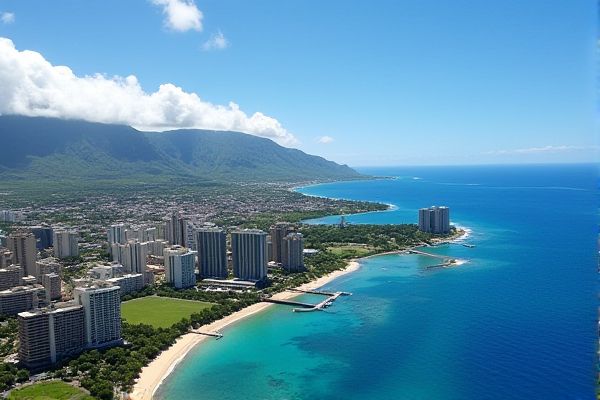
Healthcare facilities in Hawaii: Limited specialized medical services availability. Island-specific healthcare facilities distribution. Telehealth services widely utilized. High cost of medical insurance. Hawaii's unique health concern focus. Strong emphasis on preventive care. Multilingual staff in many facilities. Emergency services accessible but limited. Early appointment scheduling advisable. Diverse alternative medicine options.
Limited specialized medical services availability.
In Hawaii, especially on the outer islands, access to specialized medical services is limited, often requiring patients to travel to Oahu for complex procedures or specific consultations, which can lead to long wait times and additional logistical and financial burdens. For more information about this, visit the Hawaii Healthcare Guide to understand the broader implications on patient care. This unique challenge underscores the importance of improving healthcare infrastructure to better serve residents across all islands.
Island-specific healthcare facilities distribution.
Healthcare facilities in Hawaii are distributed across various islands, with a concentration of specialized services in the Honolulu metropolitan area on Oahu. Other islands, such as Kauai, Maui, and Hawaii County, have critical access hospitals, federally qualified health centers, rural health clinics, and native Hawaiian health systems, each catering to the specific needs of their local populations. For more detailed information on the distribution and specific services provided, you can refer to the Maps for Hawaii Health Care Facilities and Shortage Needs Areas document provided by the Hawaii State Department of Health.
Telehealth services widely utilized.
Telehealth services in Hawaii have seen significant adoption, increasing from 2% in 2014 to 20.5% in 2019, with most providers now using telehealth in response to COVID-19. Despite challenges such as broadband connectivity and digital literacy, telehealth has become a vital solution for overcoming geographic barriers and providing care to rural and underserved communities. For more information on how telehealth is transforming healthcare delivery in Hawaii, you can explore the Hawaii Resources provided by the Pacific Basin Telehealth Resource Center.
High cost of medical insurance.
The average cost of health insurance in Hawaii stands at $6,000 per person, which translates to $24,000 for a family of four. Despite these figures, this amount is still $981 per person below the national average. Costs can differ significantly depending on the type of insurance, the chosen plan tier, and individual particulars such as age and income. For more detailed insights, visit the Valchoice website for comprehensive information.
Hawaii's unique health concern focus.
Hawaii's healthcare facilities encounter distinct challenges due to low health literacy, cultural and language barriers, as well as a severe shortage of physicians. This situation is exacerbated by the state's isolation and unique taxation on medical services, which contributes to prolonged delays in care and limited access to specialized treatment, particularly affecting Native Hawaiians. These issues highlight the broader struggles within the system, demonstrating why Hawaii's Healthcare environment is far from a paradise, as these complications create significant obstacles for efficient and equitable health service delivery across the islands.
Strong emphasis on preventive care.
Healthcare facilities in Hawaii, such as those affiliated with Hawaii Pacific Health, place a strong emphasis on preventive care, including regular checkups, blood pressure screenings, Pap smears, cholesterol and diabetes screenings, and annual mammograms, all tailored to the individual's age, family history, and current medical issues. These facilities encourage individuals to take charge of their health by participating in preventive screenings that play a crucial role in maintaining overall wellness and early detection of potential health concerns.
Multilingual staff in many facilities.
Healthcare facilities in Hawaii, such as the Kalihi-Palama Health Clinic, The Physicians Center, and Waikiki Health Center, are committed to providing multilingual services to support the diverse needs of their patients. These facilities offer essential services such as low-cost clinics, immunizations, and TB testing with the help of staff and interpreters proficient in various languages. The Bilingual Health Education Aide program further enhances this support by offering language and cultural interpretative services. This ensures that immigrants, migrants, and limited-English speaking populations have access to health promotion, prevention, education, and necessary health services across numerous health centers. Additionally, the Bilingual Access Line provides interpretation and translation services in over 250 languages, including American Sign Language, to facilitate healthcare and other service access for individuals with limited English proficiency. These comprehensive programs are designed to ensure language access and promote health equity in the Hawaiian community.
Emergency services accessible but limited.
Emergency services in Hawaii are accessible 24/7, but can be limited in certain areas; facilities like The Queen's Medical Center - West O'ahu and The Queen's Medical Center in Honolulu provide comprehensive emergency care, including trauma and stroke services. Though some areas may rely on specific departments like the STAR area for minor injuries and illnesses, a closer look at the Emergency Department of The Queen's Medical Center - West O'ahu reveals a dedication to addressing a wide range of urgent health needs.
Early appointment scheduling advisable.
Early appointment scheduling is advisable through Kaiser Permanente's system, which notifies patients about earlier availability for certain types of appointments on a first-come, first-served basis, allowing for quicker access to care. For more information, visit the official website of Kaiser Permanente, where you can learn about their innovative approaches to healthcare management and scheduling. This system ensures that patients receive timely medical attention, reducing waiting times and enhancing overall healthcare experience.
Diverse alternative medicine options.
Nestled in the serene setting of Waimea, Hawaii, Iris Integrative Health stands out with its unique approach, harmoniously blending conventional and naturopathic medicine. This sanctuary for healing offers personalized care plans and direct primary care memberships, alongside a diverse range of educational and experiential programs aimed at bolstering holistic health. Meanwhile, Queen's North Hawai'i Community Hospital enriches the community with holistic care services offered at no charge, including aromatherapy, Oshibori, Healing Touch, Reiki, and the soothing CARE Channel. In Honolulu, Oahu Natural Care merges modern scientific research with naturopathic therapies to delve deep into the root causes of health issues, providing comprehensive and personalized care through innovative and well-researched treatments.
